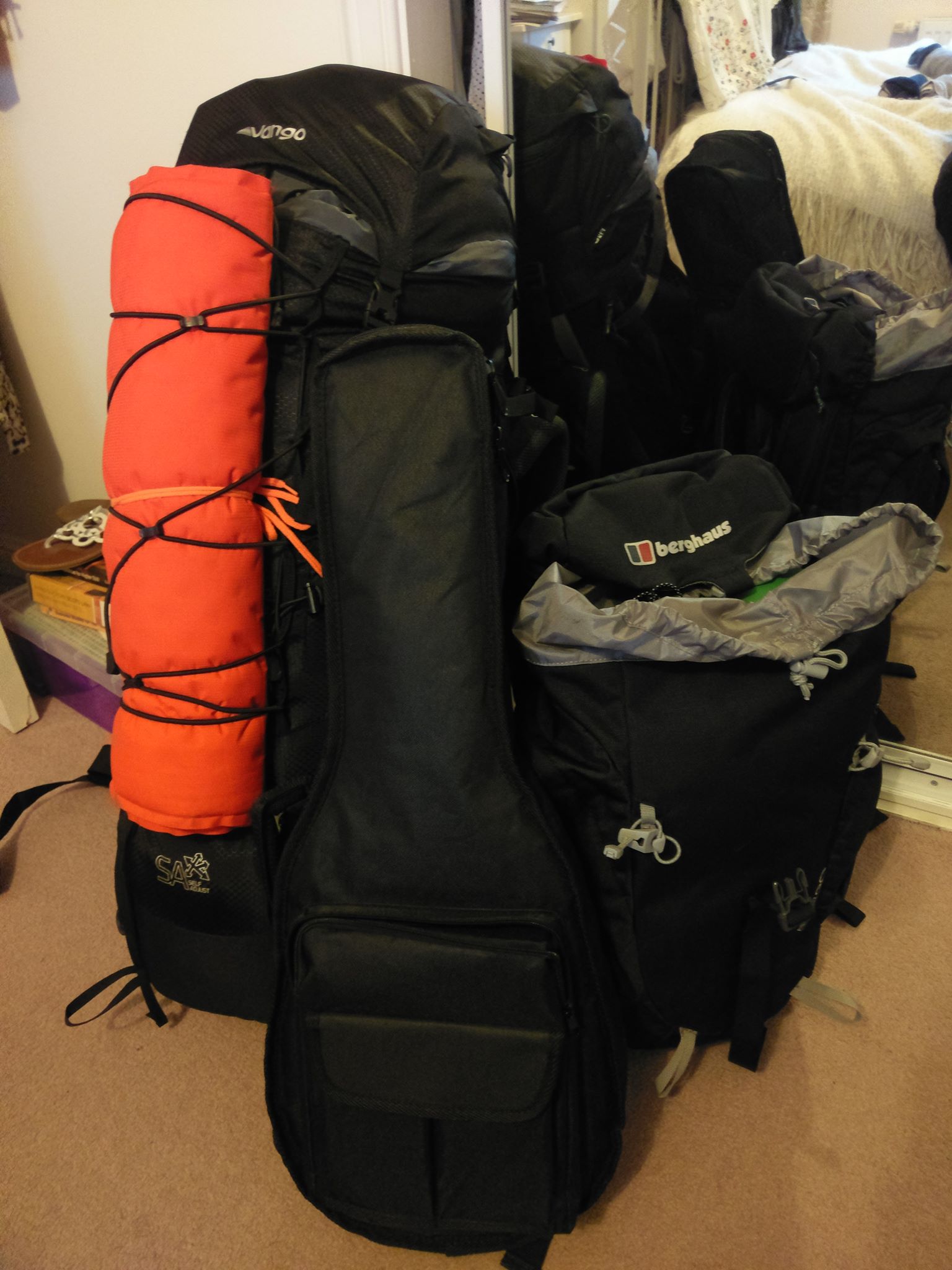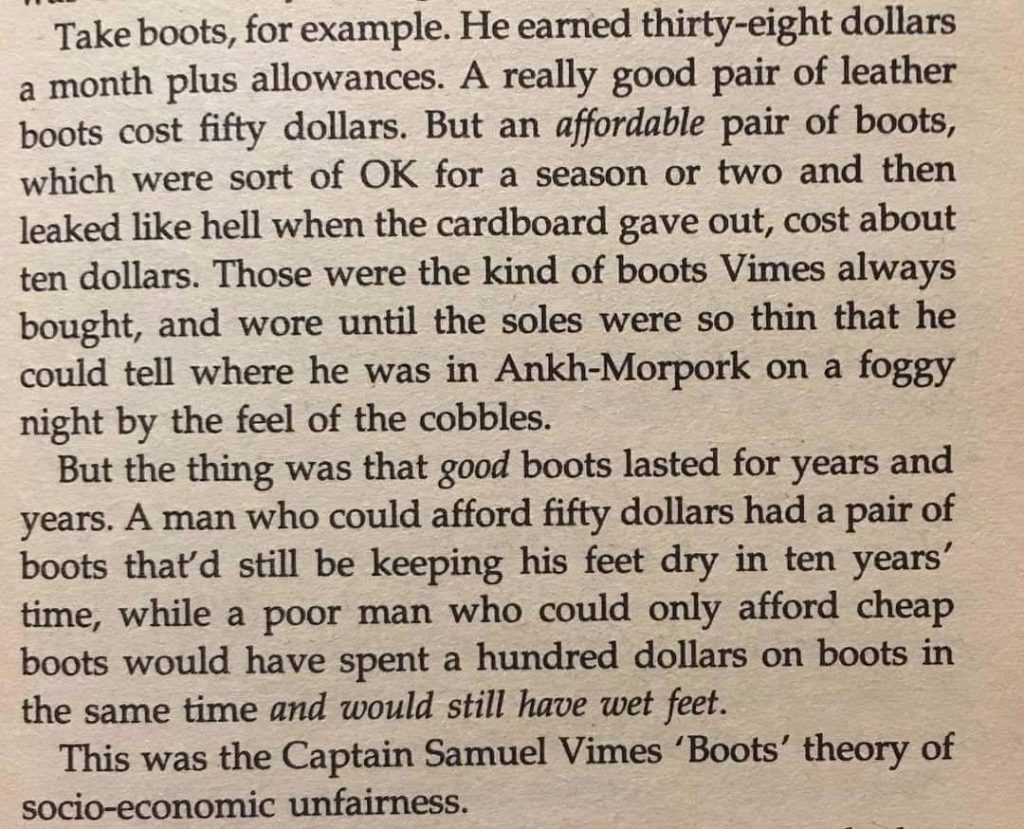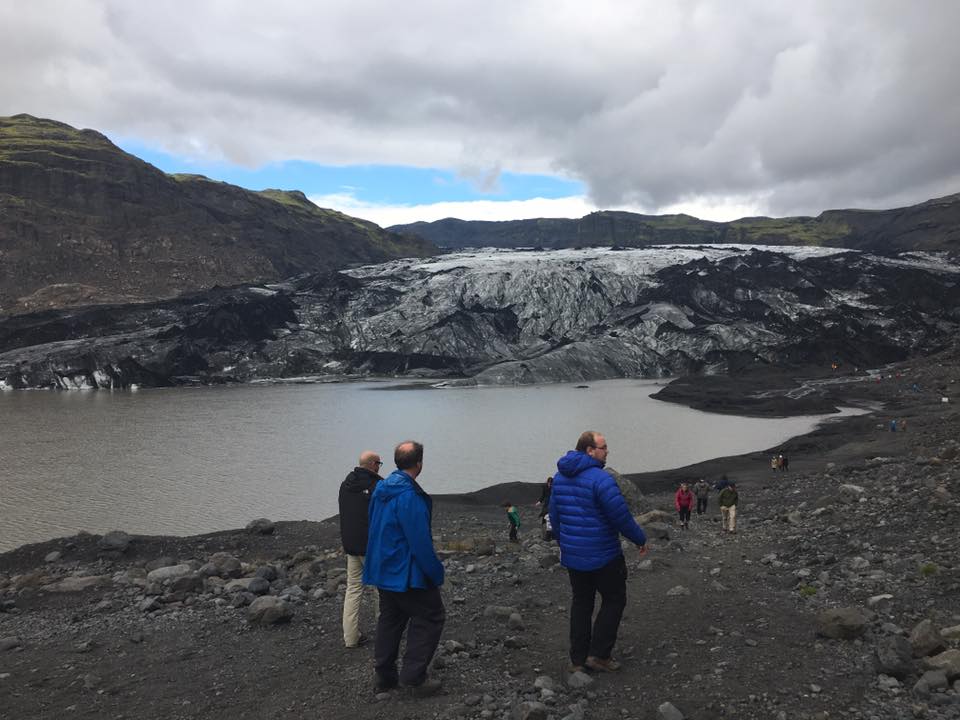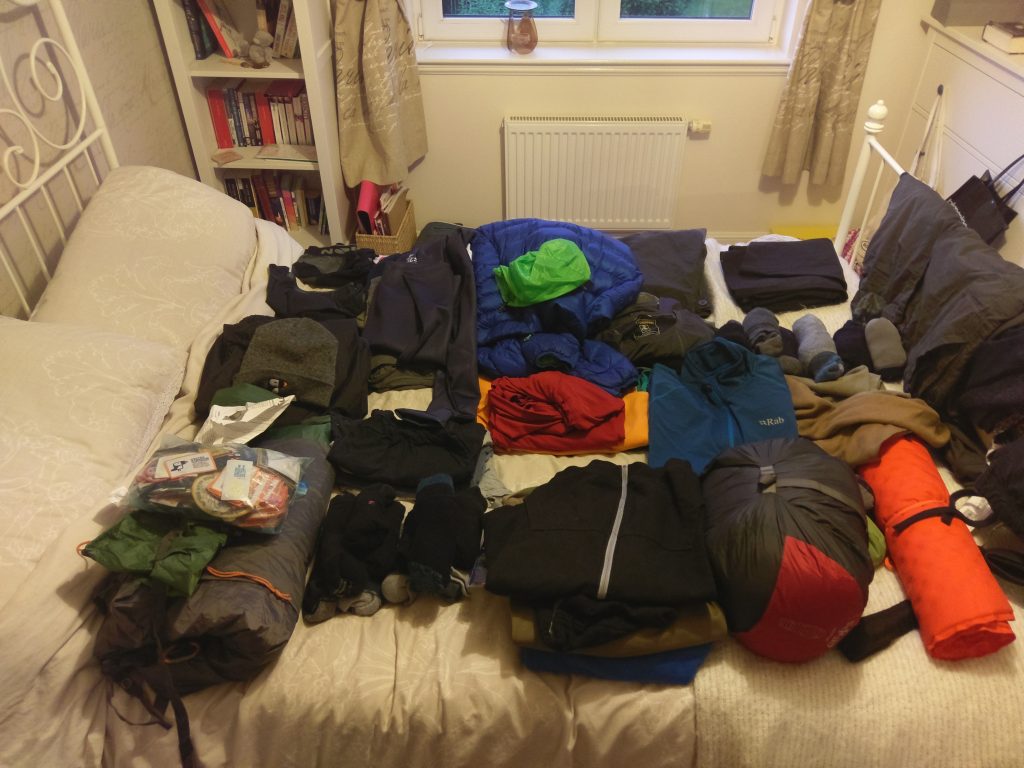This week – actually last week, but I managed to lock myself out of the blog for a week by forgetting the password – I want to take a few minutes to make a comment or two on a couple of things from the last Moot Monday. From the title you’ll guess it’s going to be about sustainability and kit, but I’m starting with the Moot Monday and will progress there in a leisurely manner to make some sort of vague notion of a point.
This isn’t me necessarily disagreeing or indeed agreeing with what was said, but there were a few comments which stuck out to me and I wanted to add my tuppence worth. As everything on here, it is entirely my own opinion and isn’t official in any way – there’s a disclaimer on the “about” page. You may disagree with me, you are entitled to form your own opinion.
For those who weren’t there, I would strongly recommend watching the recording of the presentation (and all the others). In part because of the “unique global situation”, we’re getting a regular flow of information from the Contingent Management Team.
This is absolutely brilliant – I can’t commend this enough. For the last Moot, I (personally) felt like I was getting far more information from the organisers and by reading the various newsletters and websites myself than I was getting from the CMT. As you may imagine, this led to issues and meant we were often getting no, or worse, contradictory information.
To have this open method of communication 15 months before the event, and with no briefing weekends currently on the cards, is fantastic. And, as I’ve said before and am sure I’ll say again (and again, and again), you very much get out what you put in where Moots and Jamborees are concerned, and by engaging with the contingent at this point in time you’re certainly putting in – and will reap the rewards in the long run.
These sorts of Zoom events are something I really want to see continue into other events, whether they be the UK Contingent events like Jamborees, or even something we do with our Groups for trips, camps and visits to help the parents without going to the full extent of trying to get everyone to a parents meeting.
The theme of this Moot Monday was “Sustainability”, which is one of the key goals of the Contingent. We were joined by a Gentleman from the Boy Scouts of America (whose name escapes me) who is both the US Contingent Leader and the BSA’s Chief Sustainability Officer. (I could go back and look at the video, but it’s not hugely important for this).
The first thing I took away was that the BSA is looking at sending a Contingent of up to 250 to the Moot. This is, if my memory serves me right, about 10 times the number they took to Iceland and about 50 times that they took to Canada – a far greater growth than our own contingent, but showing the increasing popularity of the Moot, which is brilliant in my view.
And yes, in part this is because the BSA held their National Jamboree at the same time as the Moot, and that event is a far bigger deal to them than a lot of the UK based events are to us.
I thought the presentation was a good one. I’ve sat through dozens of presentations on sustainability, both professionally and for Scouting. Most of my thoughts on the subject matter I will leave to another day – Don’t get me wrong, I am very much behind the idea of sustainability, mostly as a self-preservation tool, I just feel we’re targeting it wrong, addressing the symptoms rather than the cause – but that’s my radical left wing politics for you.
Anyway. One thing above all else stuck out for me. I can’t remember the exact comment or the context of how it came up, but effectively it was “buy expensive stuff because it lasts longer.” And on the face of it, I can’t disagree, the top specification kit, whether it be tents or cars or Atomic Force Microscopes, tends to be the most expensive. It just doesn’t sit right with me that this was a comment made with regards to a Scout event.
If you’ll permit me a little, relevant, diversion. I am a huge fan of Sir Terry Pratchett’s Discworld books. It’s something Lyndsey introduced me to – I’d never read them before we got together, and within a year I’d read all the books and was hooked on the universe. If you’ve never read them and like fantasy type books – whether Lord of the Rings or a Song of Ice and Fire, I can’t recommend them enough. You can have that as a bonus top tip if you want!
For those unfamiliar with the works, there are several story arcs set in Discword. It’s kind of an ensemble cast, with various characters from different arcs cropping up here and there. My particular favourite of the arcs are those set around the Ankh Morpork City Watch. In one of the earlier books, Captain Sam Vimes, muses to himself as he walks his beat through the city. It’s a musing that’s stuck with me and sprang to mind as our friend from the BSA gave his presentation last week:
I come from a fairly well-to-do background. My family isn’t exactly landed gentry, but I’ve never wanted for anything. Even now, I earn above the national median wage – I’m not in the 50% tax bracket, or even the 40% bracket, but my outgoings aren’t nearly as much as my incoming. There’s often still month left at the end of my money, but that’s down to my own financial irresponsibility (and stupidly expensive hobbies) rather than a genuine issue.
My boots – to continue with the theme – are pretty pricey, I seem to remember seeing them advertised as £450 new, I got them for about £250 between sales and shopping around, and you’ve got to love a Scout discount… They are a top brand, bought out of a fairly upmarket outdoors shop (Nevisport on Sauchiehall Street if you must know), and frankly, they’re fantastic. As long as I look after them, they will be keeping my feet dry in 10 years time.
Why am I telling you this? (this is really becoming a catch phrase isn’t it?)
Not everyone has my background. Not everyone earns over the national median wage or are as comfortable as I am. We talk about diversity and inclusivity being another of our Central themes of the contingent and truthfully, Young People and adults from some of the poorest areas of the country are under-represented on these events. This is a complex issue, that I don’t necessarily know how to solve, but is a genuine issue
If you take a map of my District, Great Western District, Clyde Region, and overlay it on the Scottish Index of Multiple Deprivation map, you go from the area my group is based in, one of the least deprived 5% in Scotland, right through to areas like Drumchapel which have areas in the most deprived 5%. My Group has a long history of sending its members to various internationals, others in my District do not. And whilst there are various inclusivity funds, and opportunities for fundraising, often it’s hidden costs in the way of gear that catches people out.
Scouting has, for a very long time, been seen as a White middle-class Christian boys club. We are slowly shaking off these stereotypes, but still have a long way to go.
To advocate everyone buying, to continue the theme, the most expensive, top spec boots on the market in the name of sustainability is, frankly, irresponsible.
I understand that the comment came from an individual out with the Contingent. And I very much understand the point he was trying to make – it is more sustainable from an Environmental protection point of view, to manufacture a single pair of boots, use them and dispose of them than ten pairs in the same time period, but it felt to me a little insensitive.
I’m acutely aware of “Great White Savior” complex, or a view that I’m preaching, and I swear this isn’t what I’m aiming for. More a reflection on another point of view.
My Top Tip here is never put yourself into debt for the Moot. Buy what you can afford.
For Iceland, almost from the word go, the messages from the Organisers and the Contingent were doom and gloom regarding the weather. The newsletters were telling us that we might see all four seasons in an afternoon, that it was likely to snow whilst we were out there (in August!) We were told specifications for tents to withstand hurricane force winds and torrential rain.
This may be slight hyperbole but isn’t too far off the mark.
We had out first training weekend for Iceland over a cold November weekend, including Remembrance Day, in 2016 as this was supposed to be a warning about the weather we would be facing out in the middle of the Atlantic. That weekend was a little chilly, and a lot of folk found that their kit, designed for summer camping in the South of England, wasn’t up for winter camping. (To the surprise of absolutely no-one from further North than Watford, and to the great amusement of us from beyond Hadrians Wall…).
There was a lot of discussion after this weekend about gear – which was in itself very good – but the more conversation about tents, and sleeping bags, and jackets and socks, and boots, and merino wool thermals and rucksacks continued, the pricier and pricier the event was becoming – beyond the event fees, and the travel costs, and the additional tours, the price of kit was pushing the already high cost upwards.
Truthfully, I used Iceland as an excuse to upgrade a lot of my kit. I bought myself a Rab Jacket, and a Rab Sleeping bag. I’d done Canada in a Tempest 200 and found it just a little small for the Moot, so had decided I was upgrading to a Banshee 300, I just hadn’t gotten round to it. I needed new boots, my old ones hadn’t been looked after properly and were nearing the end of their usable life after about 6 years of pretty heavy use. My thermarest had died at a festival a few years before and I’d been using a foam rollmat (or two) since and I decided I wanted a new one for the Moot.
When I got to Iceland. That tent and the thermarest were the only things that were useful. The sleeping bag wasn’t used as a sleeping bag – it was used as a duvet – my older sleeping bag, a Black’s 3 season one I’d been using since I was an Explorer, or my branded 2007 Jamboree sleeping bag, would have been perfectly adequate. Even on my continuous night shifts, that jacket was only ever used as a very expensive feather pillow – I think I wore it as a jacket once (when visiting a Glacier!). Even my boots – which I class as a strict necessity for any camp – weren’t really needed – I could have got away with trainers, even when I got to Úlfljótsvatn.
Why? Well, despite the weather warnings, when we got to Iceland we were hit by an unprecedented heatwave. I think I wore trousers once (when I visited the glacier) and spent the rest of the time in shorts.
Whilst we can’t guarantee the weather for any event, on reflection, I could have made do with what I had. If my financial situation had changed, not buying the kit wouldn’t have affected my Moot, and even if the weather had turned, my older, cheaper equipment would have likely stood up to the task.
Do I regret buying any of that kit? Honestly no. I do a lot of winter camping with my Scouts (or at least did before the whole 2020 thing) and that sleeping bag and jacket are phenomenal. I wear my Rab jacket daily to work through the week, and I’ve taken it on my rare forays into the hills. Although I didn’t necessarily need that kit for Iceland, it’s stuff I knew I would use before and after the event, and that needs to be part of the decision making process when deciding what kit you want, or need, for the Moot.
It’s inevitable in everything, the higher the specification of the kit, the more the kit costs. But we need to use out experience and judgement to decide what level of specification we need. We’re not literally climbing Everest (despite my metaphor), we don’t need all the top-rated kit. Much of it will be nice to have, but we can get by without it.
We’re still 15 months from the event – for me that’s two Birthdays and a Christmas, so if I decide there is a particular jacket/rucksack/sleeping bag/gadget, there’s opportunity there to ask for it, or to ask for money towards it (again, I know not everyone is in the same situation as me, but it helps demonstrate the point).
Whilst the event is 15 months away, and we shouldn’t necessarily think about packing until shortly before we go, it is perhaps time to start thinking:
– What do I need for a two week summer camp?
– What do I want that will make my life easier?
– What of the above do I already have?
– What of the above do I need to find?
I’m not, at this stage, going to write a kit list, we’re all adults and we should be able to work this out for ourselves. If you’ve never done a camp longer than a weekend, it’s just a case of multiplying what you’d normally take by the number of days. If you’ve never done a weekend camp before, well, this could be a steep learning curve… I will stick a photo below of the kit I took to Iceland to give you an idea and will come back to this later.
We have an advantage over other contingents where Ireland is concerned – I’ve been to Ireland twice, once to the Republic, once to Belfast and the climate was almost identical to living on the West Coast of Scotland (or Lancashire), so we already have an idea of what kit and what type of kit we need to take.
There is obviously a trade-off. We can’t predict every situation. We can pack for what we believe to be a “worst case” type scenario given the historic meteorological data or our own experience and it can get worse. It’s not practical to pack for every opportunity. We could get two weeks of unprecedented sunshine and rainbows, we could get two weeks of torrential rain. There was a mainland UK based summer camp that had to be abandoned mid way through a few years ago (I want to say Charnwood 2019 but I can’t remember) because it rained so much it was unsafe to continue – how do you pack for a camp like this?
As I’ve said elsewhere, a Moot is a journey, it’s akin to scaling a Scouting Mount Everest. Our planning and preparation begins now. That may take the form of scribbling a vague notion of a kit list and working out what you need to get, or what you want to get/upgrade to make life easier. It might take the form of actually applying for that replacement passport for the one you lost 18 months ago (yes, this is a reminder for me).
Realising you need kit now gives you 15 months for budgeting for it rather than panicking the week before.
I will reinforce a statement from before. Never put yourself into debt for a Moot, or a Jamboree – I get that emergencies happen and sometimes the rainy day fund isn’t available and the credit card is what’s used (been there…).
I saw someone post recently that they’re planning on not buying anything new for the Moot as a commitment to sustainability, rather using the kit they already have. I’ve made a similar, less public statement, that I’m going to minimise purchases for the Moot. But I don’t necessarily need much, if the Moot was tomorrow, I have all the gear from past events sitting round the house to be able to pack it and go.
This isn’t intended as a brag, but an acknowledgement that I’m in a fortunate position compared to a lot of folk out there. If we think back to my introductory post, I didn’t have even 10% of the kit I have now when I did my first event to Hungary 15 years ago. I went with a borrowed rucksack and sleeping bag as an example. And the kit I have now has been built over 15 years with Moots and Jamborees and taking my Scouts away. Some folk look at my 15 years and scoff because their first event was 30, 40 maybe 50 or more years ago. Others perhaps only have a few years of doing this, for others still, they’re in the position I was in back in 2006 ahead of my trip to Hungary.
The reality of it all is, a £3 t-shirt out of Primark will cloth you equally as well as an expensive one from an outdoor shop. I am as likely to wander around the site in my hi-vis jogging shorts I got for £10 off eBay and use when I’m doing DIY, or my army surplus combat pants any expensive outdoors brand ones I was bought for America. Whilst there are, of course, issues with cheap clothing (ethics of labour, how long they last etc. etc. etc.), they fulfil a purpose, especially if this is your first major event, and you’re not sure if you’ll be doing another. don’t break the bank.
At most of the more recent events there has been a donation point for clothing and kit on site towards the end. So whilst there may be questions about the sustainability of buying cheap t-shirts that you don’t intend on taking home, if they are being donated to a charity rather than binned, it makes things a bit better.
Remember a good number of outdoors shops offer a 10% (or higher) Scout/Guide discount. Shop around, it’s often cheaper to buy summer kit in winter and winter kit in summer. You won’t need *this seasons* model of clothes or equipment, places like Go Outdoors are ideal. It’s where I get most of my gear (in fact I think the only bit of my camping gear I haven’t bought from there in the last 10 years is my boots…)
If you are struggling for kit, there is help out there. From your Group to your District to your Region/County. From your friends to your fellow Scout Leaders. There will be people around you who can help. Speaking as a GSL, I’ve leant Group and personal equipment to Young People and Adults for scouts, DofE and even their summer holidays. One of my Young Leaders did the West Highland Way with their friends a few years ago in a tent they borrowed from me. I’m sure most other groups would happily lend sleeping bags, roll mats or tents to it’s members to attend a Moot.
It’s easier to have these discussions with your GSL or Group Exec now, 15 months in advance of the Moot than panicking a few weeks before you’re due to go.
Sustainability is a noble goal, one we need to strive towards as a global society (again, for the survival of the species), but we need to caveat it and consider the practicalities.





Definitely agree with this.
Another cheap option is charity shops. It can be a gamble sometimes whether you’re going to find anything but they are a great option if you don’t want to support brands like Primark and are just looking for basics.
I’ll be honest Eleanor, I’ve never considered charity shops for much other than books before. But it’s a really valid point and something worth bearing in mind!